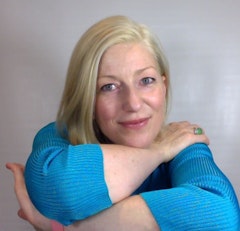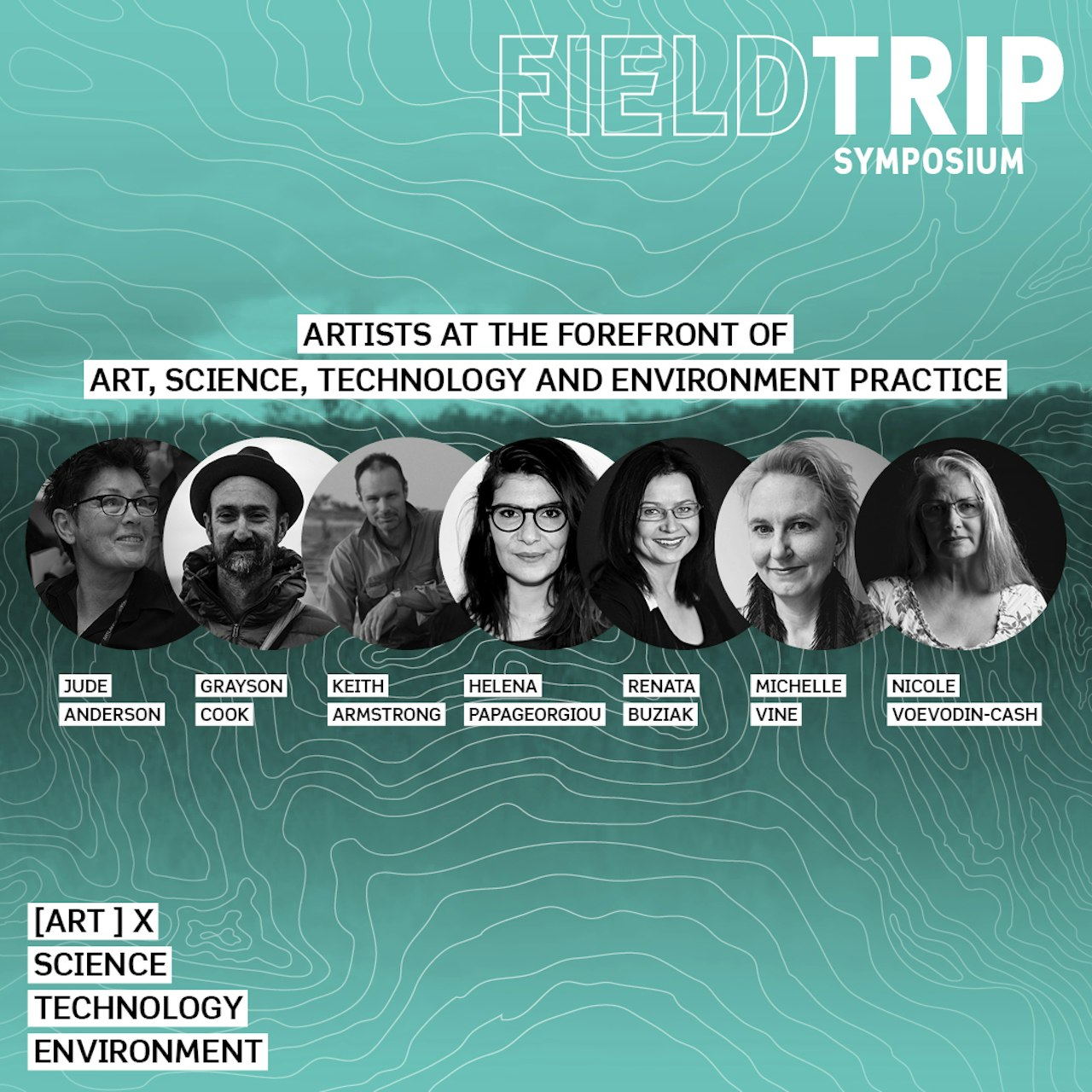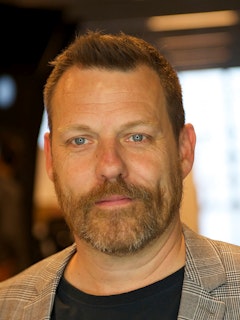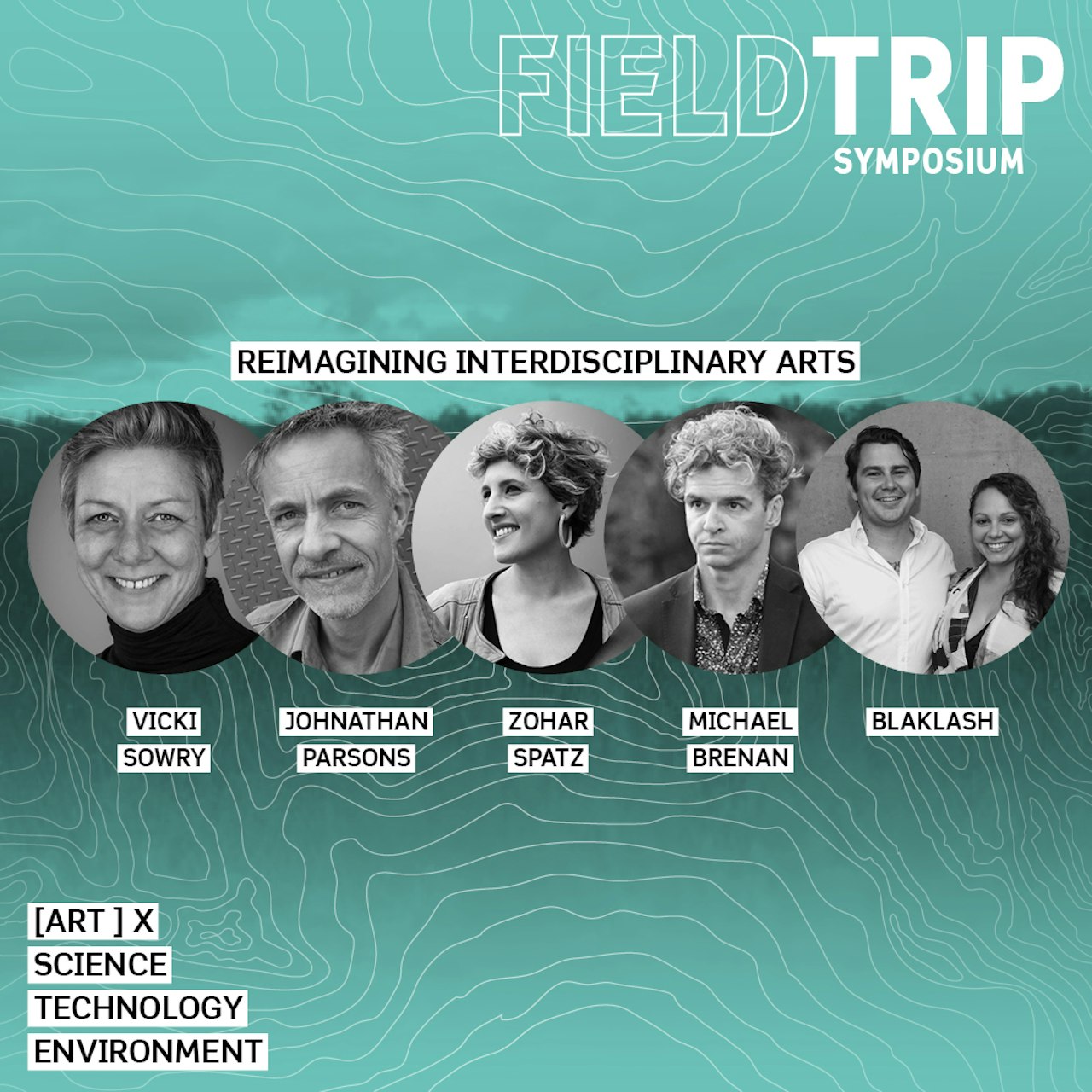We would like to acknowledge the Traditional Owners of the land on which Field Trip was based - the Gubbi Gubbi/Kabi Kabi people, and the Jinibara people - and pay our respects to Elders past, present and emerging.
together through
Art, Science, Technology, and the Environment
Should artists be at the forefront of scientific revelations? Of ecological explorations? Environmental investigations? What role does art play in informing the public about vital research and concerns affecting our environment, technology, and science? Allow us to travel back, into a not so distance past, when Horizon Festival, Arts Front, USC, and the Australian Network for Art and Technology banded together and launched: The Field Trip Symposium.
Scientific, Technological,
And Ecological Conversations?
The clouds looked heavy, like they would burst any minute. The bonus of an online field trip – you can watch from the comfort of your lounge, without getting wet, and in your pyjama pants. The Field Trip Symposium hosted over 30 incredible artists with almost 300 delegates tuning in from across the globe. Did I mention easy access to the fridge?
Under the same foreboding sky, Lyndon Davis and the Gubbi Gubbi Dance Troop filled the inter-web with ancient music as they danced along the banks of the Maroochy River, sending a strong message passed on from Ancestors who looked after the land for countless generations: take care of all things small and large.
Storytelling has been at the core of society through song, dance, and art. It’s how we’ve shared our past and given hope to the future. It’s brought communities together in times of celebration and in times of trouble. Alex Kelly and Jen Rae delved into the importance of community, of people tethering and weaving together, reimagining a positive future. When people come together and they share different perspectives it gives rise to collaborations which create new systems, new innovations, it transforms old ways into newer modern ones. Kelly believes it’s important for us to imagine joy and togetherness, so that we can bring these stories to life: strive to achieve them, be them, see the possibility, and build compassion through mutual understanding by exchanging perspectives.
The delegates attending Field Trip were able to experience and demonstrate this exchange of perspectives during the participatory photography project which Tricia King launched on the day. King, invited everyone to capture photos with a focus on three different perspectives (tags: looking up, looking down, looking forward). It was awe-inspiring to see everyone’s unique viewpoint. If we were willing on a daily basis to tilt, adjust, and share our perspectives with each other, as easily as we shared photos, then we would be able to have a better understanding of diversity, encourage open-mindedness, empathy, and dreaming.
Here is just a taste of the wonderful images that delegates from all over the world contributed.
We joined Jason Murphy, on a virtual walk through Mary Cairncross Scenic Reserve, on Jinibara country. It was in this rainforest he showed us the power of perspective as the elder Grandfather Willie McKenzie’s voice sang with the birds over a group of trekkers, with the laughter of the kookaburras in the background and the scrunching of ground beneath their feet. As the angle of the camera danced and shifted the walkers changed from being central to the story, to being minute and almost insignificant, dependable, and becoming a part of the landscape. In this moving presentation we travelled through various lenses of storytelling, while being immersed in the environment through technology.
Just as stories, old and new, weave through our life, the theme of water flows through the Field Trip Symposium. Fitting, considering roughly 60% of our bodies are composed of water. We are water creatures that can be as calm and reflective as a clear, still lake, and when peace is disturbed, we can whip up a storm sending tidal waves in our wake.
From the rainforest, we were swept away on a melody down the Barwon River, where Ros Bandt and Vicki Hallet compose music from listening to the river that flows from the freshwater regions down towards the Bowen Head Estuaries. Inspired from listening to the dialogues between different species of krill and snapping shrimp, these enchanting sounds contain gems of wisdom about climate change and urbanisation. Through scientific research, Bandt and Hallet, identify and track changes in the ecosystem based on these underwater conversations as estate development increases - creating disruption and change to our fragile resource. The music translates the science into an engaging format, bringing awareness to a wider audience.
Alongside Harward, we have amazing artists such as Bianca Beetson, from Gubbi Gubbi country, who blends story telling with technology and brings awareness to forgotten, or some would argue hidden, history through artistic practise. Beetson’s work on Murdering Creek allows the water, with its eerie sounds and presence, to speak. She believes that we need to have a deeper respect for water and its presence in our life. Interdisciplinary perspective helps bring Beetson’s message to life. Afterall, if we don’t take care of a resource that is as much part of our make-up as it is essential for our survival, where will we end up?
From creeks and rivers, the field trip dove into the Atlantic Ocean with Sarah Jane Pell. Pell’s involvement with project Tektite had us submerged and looking back 50 years when the first all-women crew went underwater with Aquarius Reef Habitat – the only operational underwater habitat and saturation laboratory. This paved the way for women in science, demystified gender bias, and opened conversations about the ocean. It brought together scientists, artists, ecologists, and researchers - together they inspired each other and innovated ways to engage and conquer issues. The research has inspired, among many things, dance performances, circus acts, and conversations about the future of our oceans and their sustainability. It is through art forms that critical topics about our ecology and environment are being translated to make the topics relevant and relatable to more people. Sarah Jane Moore works with Sydney Rock oysters, and by blending science and poetry, she raises awareness about habitat loss and oyster struggles, which if we are not careful will become our own. She compares her art to the oyster itself:
UNCOMFORTABLE;
AN ARTIST IS SOMETIMES AN
OYSTER OUT OF WATER -
GULPING FOR AIR.
From the oyster beds we lifted our heads to the clouds that feed our rivers and oceans. Grayson Cooke blends scientific data and art. His cloud data photography is both beautiful and informative – it stirs wonder but also opens a conversation. By making data more accessible and easier to understand, people are able to connect to it. Connection to the world is important if we want people to take action. And the best way for people to connect, is for them to become more involved. So how can we get more people involved in sustainability? A resounding answer rose during the symposium: by immersing in practices – by transforming the idle observer into an artist and making them aware of scientific and ecological facts. People like being involved - as we saw first-hand with the photo map - allowing audiences to become a part of the project brings them together.
For more on this concept, view the video of the full creative snapshot panel. A range of innovative artists discuss interconnectedness and importance of sharing the wonder through interactions with the world of science by stripping away the intimidating layer and immersing people in the process.
Lisa Chandler, educator, writer, curator, and Creative Industries professor at the University of the Sunshine Coast, claims that people are moved by wonder, and scientists are motivated by wonder – this is what they share – exploring curiosity and inspiring others.
AND SCIENTISTS
ARE MOTIVATED
BY CURIOSITY.
Among the artists that Chandler mentions in her Exhibition Preview panel, is Leah Barclay, who looks at eco acoustics. Barclay, uses creativity and modern technology to engage people with the environment and encourage them to think about ecosystems in new and exciting ways. This fusion of art and science with technology is the way of the future – luring people into a world of science, filling them with wonder, and making them care enough to want to make a difference.
As we splash between the bodies of water, over and under – we find ourselves sailing along the Southern Ocean towards Antarctica. Vicki Sowry is in conversation with technology-based artists and collaborators of Wild Systems, Adam Nash and John McCormick. Aside from the moving photos of crisp white and velvet blues of Antarctica, Nash and McCormick, raise an important question during their panel: What is the role of artists in sustainability of our environment? What are the responsibilities?
As the ocean tides recede, so does the end of the Field Trip. Our final dip into the deep blue, was the panel Reimagining Interdisciplinary Arts, run by Blaklash.
We began with the importance of storytelling. We’ve seen the importance in bringing awareness, translating data, and finally, its role in fusing art, science, technology, and the environment in an innovative and engaging manner to encourage action and not only share the stories, but share strategies. The vital point the artists have made is that interdisciplinary fields coming together are about seeing how we can use other processes and go on a journey of cross-cultural understanding and developing. During the panel, some points that came out related to using technology in a new way, that didn’t translate a medium directly, but innovated to go deeper, closer, and different.
The intersection of science, technology, and the environment is vital in translating research and findings into stories and art that have the power to affect us, move us, and inspire us to act. We need to see more artists in scientific and environmental spaces using their innovation and creativity to provoke action.




















